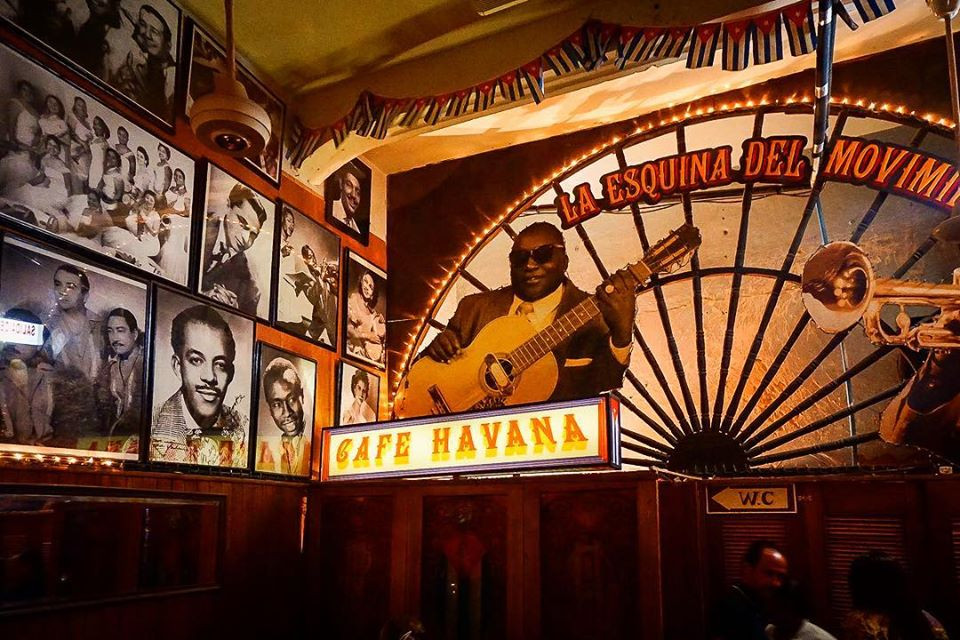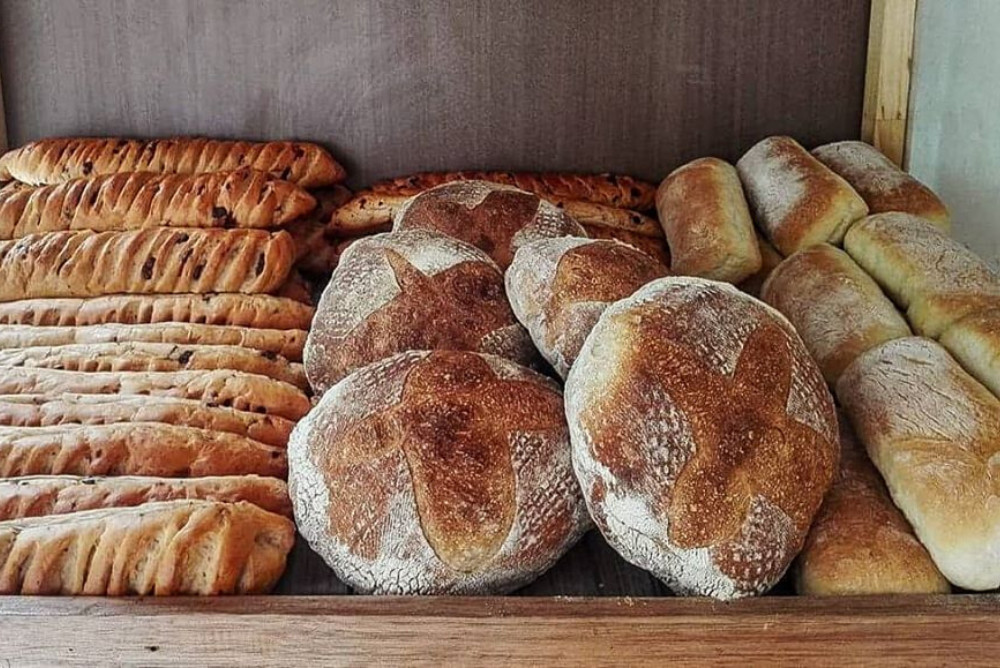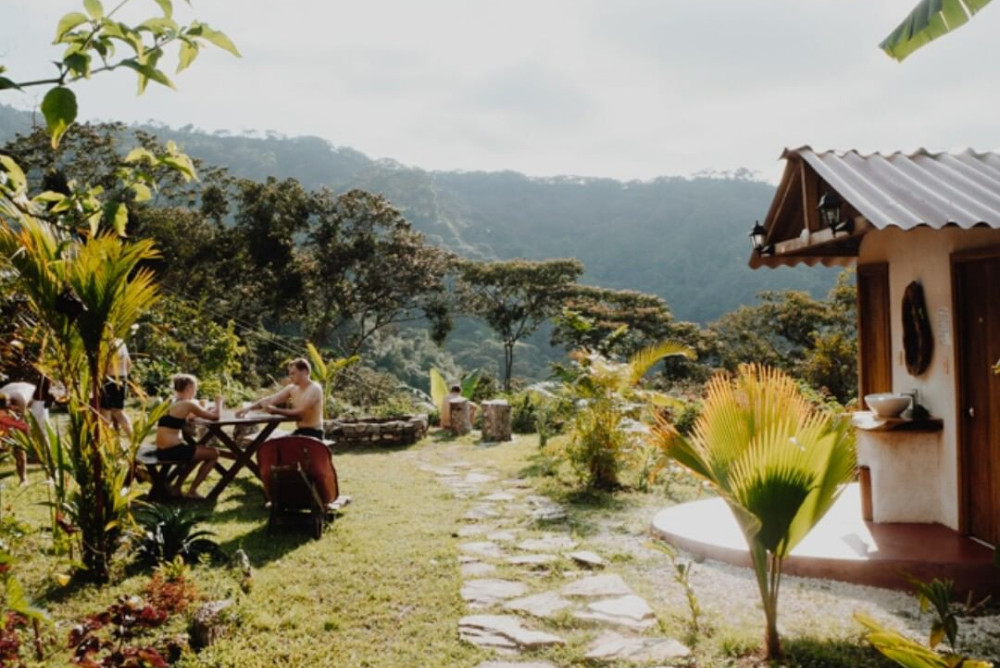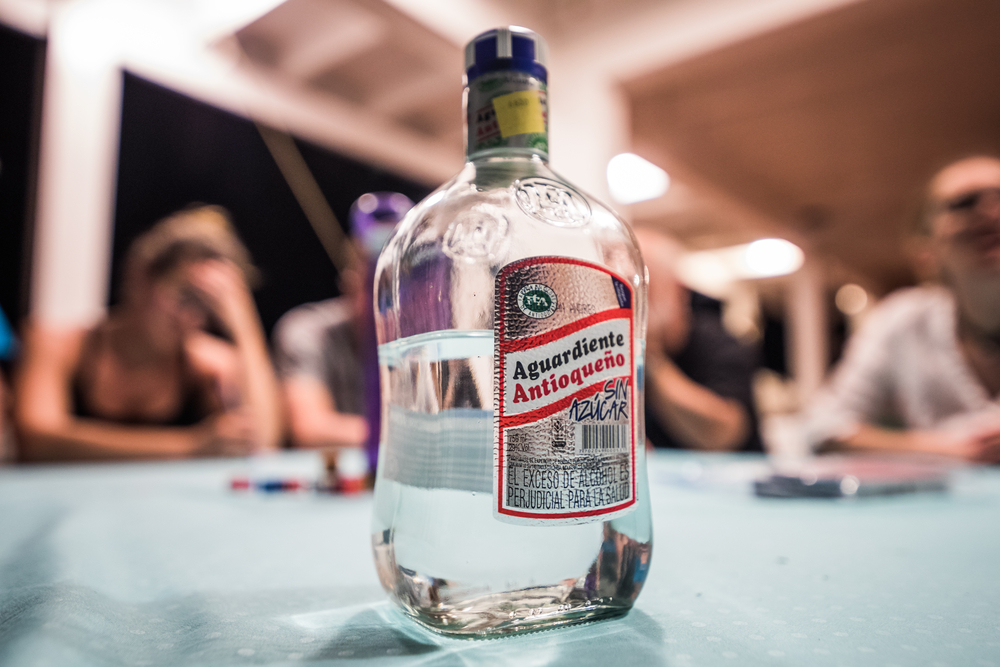Swaying in a colorful hammock to nature’s tune of a gentle Caribbean breeze is just the tip of the iceberg when it comes to Colombian treasures. Amazonian greenery, misty mountains, and arid deserts give this country (nearly) all of South America’s land diversity right within its borders.
Before my fist visit, fellow travelers emphatically shared countless starry-eyed admissions of love for Colombia with tales of jungle treks, cannabis tourism, and the exuberant spirit of the locals. After visiting, what can I say? They were absolutely right! This place is pure, unadulterated magic, with a hearty dash of salsa dancing.
Leave your stereotypes and Narcos-based Netflix tourism at home. The real Colombia is safe, and it’s nothing like what the news has been telling you for years. If you’re looking for a perfect Colombia itinerary (but not sure where to start), don’t worry, we’ve got you covered. Here are 29 of the absolute best things to do in Colombia:
Explore the Dr. Seuss-inspired Valle de Cocora

Few places in the world compare to the Quindío region’s Valle de Cocora, a whimsical gaggle of towering palm trees precariously perched on the mountainside. These wax palms hover around 200 feet tall, painting a picture that you probably saw in Dr. Seuss’ The Lorax as a child. It’s a classic case of Mother Nature making us question her mysterious designs. You can hike the whole valley, ride a horse, or just bask in the incredible setting. Low hanging clouds add serious ambience, but they’re known for causing sporadic downpours too. Pack a rain jacket.
Visit mind-blowingly constructed Las Lajas Sanctuary

At first sight of Las Lajas Sanctuary, you might think you’ve been catapulted into some bizarre German-Amazonian fusion land. This basilica church sits just outside of the small town of Ipiales, built right in the middle of a canyon above the Guáitara River. Did you hear me? Built above a canyon. It’s a stunning sight, a puzzling concept, and a close rival to all of the churches and castles that Europe uses to claim fame.
Enjoy mulled wine with a killer view at Casa San Isidro

Not only does Casa San Isidro have a wonderfully warm environment, it’s also steps away from the absolute best views of Bogotá. The restaurant sits atop the lofty hill of Monserrate, with seasonally rotating gastronomy accompanied by candlelight and a ceiling composed of wood beams. I didn’t stay for dinner, but the vino caliente (spiced warm wine) was an incredible treat for the misty rain that greeted me at the hilltop. Stop in for a drink, at the very least.
Sprawl out on South America’s biggest hammock

When I say big ass hammock, you’re probably thinking enough space for 2-3 people to sit together. The sprawling hammock at Casa Elemento in Minca has enough space for three times that crowd, complete with a view of the misty Sierra Nevada Mountains and even the city of Santa Marta on a clear day. This sky-high hangout is part of a hostel, but taking a quick peek seemed to be alright (at least when I randomly showed up via a new local friend’s motorbike). It’s not the only massive ‘mock either; there are a couple with mountain views, and another one nestled a bit lower on the guesthouse grounds, shaded by jungle trees.
Check out The Salt Cathedral

An old mine turned intricately carved worship space is nothing short of intriguing, to say the least. The Salt Cathedral of Zipaquirá sits 650 feet underground, illuminated by colorful lights throughout the cavernous space. It’s just like any other church in terms of contents: it has an altar, pews, and even some assorted marble sculptures. It’s as beautiful as it is puzzling and open for visits every day, except Sunday when service takes place. You’re going to have to see this one to believe it.
Sleep in a hammock in Tayrona National Park

Caribbean bliss is epitomized in Tayrona National Park: thick rainforests, palm trees for days, and a beautiful meeting of the sea and the Sierra Nevada Mountains. You can trek your way through the park via a myriad of trails with twists and turns revealing some of the most stunning shores along the way. You even have the option of spending the night within the park between three different campgrounds. I have a knack for walking aimlessly until I get tired, so I ended up at a site called Cabo San Juan—the farthest (and most sought after) campsite. Here, you can sleep in a hammock with a sea breeze or opt for a tent just steps from the shore. I could rant on and on, but I’ll leave it at this: Tayrona blew my freakin’ mind.
Jump in a giant mud volcano at El Totumo Mud Volcano

If your first thought was what the heck is a mud volcano, you’re not alone. I had never heard of one before El Totumo Mud Volcano, an active mini-volcano near Cartagena. It can accommodate around 10-15 mud-seeking bathers at a time, so come prepared to participate because this muddy marvel definitely isn’t a spectator sport. It’s said to have healing properties, but even if it doesn’t, your skin will at least be more exfoliated than it was previously.
Get jazzy at Café Havana

Cartagena is home to a generous handful of buzzy, bustling bars, and Havana Bar was one of my favorites. A taste of Cuba (and some strong spirits) lies in this corner cabaret, with an expansive wrap-around bar and live performers onstage each night. It’s definitely not a secret anymore, but it lives up to the hype. I had the chance of catching the bartender for one last round before closing, after most of the dancing crowd had departed. The wood paneled walls and airy atmosphere (literally, the ceiling is covered in fans) make for an old-timey feel that’ll probably make Cuba next on your destination wish list.
Don a wetsuit in Taganga

Small town Taganga is sandwiched between two towering hills that make it feel like a completely remote oasis of laid back charm. The diving opportunities, however, are anything but small. I might have spent most of my time lounging in my hostel pool, but I came across plenty of opportunities for both learners and seasoned divers for a super reasonable price. Check out Poseidon or Ocean Lovers to get snazzy in a wetsuit and some flippers.
Enjoy a taste of France at La Miga Bakery

Listen up, because I ate three chocolate baguettes from this place and I’m here to encourage you to do the same. A Parisian style bakery that can compete with the likes of France was the last thing I expected to find in Minca, Colombia, but lo and behold, a surprise waits on every corner. La Miga Bakery was a happy accident, a beacon of light in the middle of being stranded with nowhere to stay. As it turns out, the owner is French (which explains some things) and all of the offerings are downright scrumptious. You’ll probably smell the pleasant aromatics before you even see the shop front.
Head off road to Cabo de la Vela

Ecotourism and water sports are two enticing reasons to make your way up to Cabo de la Vela. If you’re a fan of open roads, the middle of nowhere, and sand in new places, add this one to the list. The Guajira Desert surrounds this small town, contrasting against the blue hues of the Caribbean shores. There aren’t many roads, traffic, or businesses and that’s just what makes the area so special. Spend your time kitesurfing, hiking in the desert, or learning about the indigenous Wayuu culture in the region.
Rent a motorbike and cruise to San Rafael

Riding a motorbike around the mountainous roads of Eastern Antioquia is one of the most freeing experiences one can have. On a whim, I rented a motorbike in Guatapé and spent an entire day whipping around tight bends in the road and marveling over verdant valleys, eventually ending up in a small town called San Rafael. There are a few treasured swimming holes nearby, so bring a suit if you’re keen on a refreshing dip. Just don’t try to take your motorbike on the seriously rocky pathway to it like I did. Check out Getaway Colombia in Guatapé to rent some wheels; they got me set up for the day and we became friends in the process! Ps, don’t panic, but there are sloths here.
Roam around the Tatacoa Desert

Unbeknownst to many, you can get a taste of outer space right in Colombia. The Tatacoa Desert’s Mars-like terrain is reminiscent of some otherworldly destination, with nightly opportunities for some of the best stargazing the continent has to offer. The local Tatocoa Observatory features high-powered telescopes, however, the stars are pretty fabulous to the naked eye (thanks to Tatacoa’s proximity to the equator). Be sure to check out Los Hoyos swimming pool for a dip to escape the heat. It’s probably one of the more unique pools you’ll ever see, built right into the dusty, arid land.
Hop on an inner tube down the Palomino River

The little town of Palomino sits right on the beach, but the Palomino River is what really steals the show. Why, you might ask? Tubing. Lots of it. You can lackadaisically glide down the river from the jungle to the sea, all while sipping a beer. There’s no need to book in advance—just take a walk down Palomino’s main street (there’s only one, really) and you’ll find some local gents ready to take you to the best starting spots via motorbike. It’s easy to spend an entire afternoon leisurely floating, stopping at secluded riverside beaches as you please.
Try some Italian fusion arepas at Colombitalia

Normally, I’m an advocate for the most classic offerings when it comes to street food, but Colombitalia stole my heart (and appetite and spare pesos). Some of my fondest arepa memories took place here, which is a bold statement. Each arepa is made to order, grilled right in front of you, then turned over to you to decide how to properly adorn it with all of the sauces on deck. They had traditional recipes, along with some more inventive options (tried most, loved all). They’re cheap, addictive, and worth every penny and calorie.
Learn about the transformation of La Comuna 13

Medellín has seen a massive transformation away from a past filled with violence and heartbreaking accounts of lives lost. Comuna 13 was formerly the city’s most dangerous neighborhood, rife with crime, gang activity, and drug trafficking. Nowadays, it’s home to the city’s best street art, live performers, digital nomads, and curious visitors. It even made our list of the best places to travel in 2020. The history of the area is well worth learning about, and the sheer sprawl of the buildings up onto the mountainside is a mind-boggling sight. Go it alone on foot or join in on a walking tour for a little more guidance.
Get a little wild in Medellín’s El Poblado neighborhood

Rowdy is an understatement when it comes to Poblado. This neighborhood is the epicenter of nightlife in Medellín (one of them, anyway), and the party packs a powerful punch. Specifically, a tiny square called Parque Lleras is where most of the bars and clubs are. Take your pick from Colombian tunes to international DJs; you’ll never have to compromise with all of the offerings available. My personal favorite was Salon Amador, a lounge-inspired trendy club with both indoor and outdoor rooms. The lighting and décor were killer, and they’re known to throw some killer parties.
Dive into a world of gold at Museo del Oro

Bogotá’s Gold Museum (Museo del Oro) is the real life version of every cartoon gold block you ever saw in cartoons as a child…with a hearty helping of history and intrigue. The space contains over 55,000 pieces of gold (among other ancient treasures) and the selection truly doesn’t play around. There’s an odd calmness to the museum, with most rooms under dim lighting to allow the real treasure to shimmer and shine. This ornate palace makes the cast of Goldmember jealous.
Climb El Peñón de Guatapé

In short, it’s a giant rock with 650 stairs on it. But wait, there’s more. This mammoth-like monolith happens to be in the most idyllic location that a massive boulder could possibly be placed. Surrounding Guatapé is every lake vacation you’ve ever dreamed about wrapped into one, with a zesty Colombian twist. The top of El Peñón overlooks a swirly wonderland of lakes and greenery, a strong contender for the best view in the country. Honestly, I had a fabulous time taking in the views merely from ground level, but if you’re down to pay the entry fee of about $6 USD, it’s worth the climb.
Try some fancy ceviche at La Cevichería

I’ll never pass up ceviche served right off the street from a man with a cart (call me a daredevil). Having said that, the wondrous outdoor patio at Cartagena’s La Cevichería caught my eye and the menu ended up being one of the best culinary experiences I’ve had during my travels in South America. As it turns out, Anthony Bourdain shared this opinion, and the restaurant has earned international notoriety as a result. Their ceviche is mouth watering, noticeably fresher than the competition, and packed with herbaceous, citrusy flavor. Sit by the open kitchen to get a look at how the magic comes together.
Sleep on the banks of the Buritaca River at El Rio Hostel

Life gets a lot simpler when you get rid of WiFi, add a natural, lazy river, and the meditative sounds of the jungle. El Rio Hostel was voted Colombia’s best hostel, and it’s not just that: if a dorm bed isn’t your forte, you can get a private cabaña, or even an outdoor hammock. Travelers across the Caribbean traded stories of El Rio, ranging from ohmygod it was incredible to it was sold out and I’m so bummed. The grounds are focused on fostering a community atmosphere, with family-style dinners and daily group activities ranging from river tubing to dance-filled happy hours. Social butterflies will thrive here. In fact, you might just extend your stay again and again.
Learn about (and indulge in) local coffee at La Victoria

The deliciously aromatic smell warrants a visit alone. La Victoria is one of the oldest coffee plantations in Colombia, and a walk through the old style building feels like a step back in time. And coffee isn’t the only brew available, either. They also have an artisanal brewery called Nevada onsite. As if coffee and beer weren’t enough to satisfy, you can also stay right on the grounds at Casa Viejas, a mid-jungle oasis that matches the historical charm of the rest of the grounds. I didn’t spend the night due to prior made accommodations, but could’ve easily set up shop there for a few days.
Find the lost city in the Sierra Nevada Mountains

Deep in the jungles of the Sierra Nevada lies Ciudad Perdida, or as said like a gringo, The Lost City. This archaeological site looks like a fusion between Machu Picchu and Jurassic Park, with a deeply secluded, jungle-shrouded location that can only be hiked to over the course of 4-6 days. You won’t find any busses to the top here. Ancient, moss-covered rock platforms have been forgotten by time, taken over by the biodiverse surroundings. The only sounds you’ll hear are birds, wind, and bugs. Most guides for the experience are indigenous locals, allowing for trekkers to learn about cultures and traditions of different groups that occupy the Sierra Nevada. Please, bring bug spray.
Try Aguardiente, Colombia’s national liquor

As soon as you step foot in Colombia, you’re sure to start hearing about (and seeing) aguardiente all over the place. Black licorice lovers will adopt it as their new favorite drink, however, those who aren’t a fan of anise spice (like me) might cringe a bit after a shot. Love the flavor or not: it is your duty as a visitor to Colombia to try the spirit. Brands differ from region to region, so what you find in Bogotá might be different in comparison to Medellín. Find it at supermarkets, bars, billiard houses, tables full of old men playing cards…essentially anywhere you’d like.
Find my favorite arepa vendor on the east side of Cartagena’s Walled City

If street food is fine art, then I’m a damn museum curator. You can find the goods (legal, get your mind out of the gutter) across the whole country. But the best street eats I encountered were in Cartagena right on the Caribbean Sea. Specifically, there was one woman that had a swarm of hungry friends around her cart every time I passed by. Immediate intrigue. She sold arepas de huevo, delectable deep-fried snacks filled with eggs, meat, or veggies. For me, she really went the extra mile to help me out as a non-meat eater. I don’t know her name or if she’s still selling arepas this very moment, but there were a handful of other delicious offerings up and down the street near the intersection of Calle 36 and Carrera 11.
Eat dinner in theater chairs at El Sitio Restaurant

One of the more quirky, charming restaurants I’ve had the pleasure of experiencing is El Sitio, a condensed, yet cozy eatery in Bogotá’s La Candelaria neighborhood. The rooms are filled with all types of odd accouterments, from hanging wagons to old school hair dryers. All of the seats are theater style and the walls are covered in random art pieces that don’t seem to correlate to one another. I can’t say the food was better than the decorations, but it’s worth a visit regardless. The service is friendly, the menu is diverse, but you won’t find a website—only directions via Google Maps.
Walk past the crowds to find Miramar Beach Club

Everyone assumes that Cartagena is lined with beaches from north to south, but in reality, the best ones are only accessible via boat. Tierra Bomba Island is about a 25-minute boat ride from the city. On first impression, I regretted my arrival. The sand was crowded, assorted trash bobbed near the shore, and it was nothing like what I imagined. After picking a direction and walking to escape that area, the crowds disappeared entirely, a wonderful skyline across the bay emerged, and I stumbled upon Miramar Beach Club: an enchantingly empty beach bar complete with a pool and cabana beds. Moral of the story: if you don’t like it, keep walking until you find something better.
Take a swim in Pozo Azul

Natural swimming holes are abundant around the mountain town of Minca, and Pozo Azul is by far the grandest one. Some will walk, some will ride motorcycles, some will hire moto taxis by locals who look like they might not be old enough to drive. You’ll make it one way or another. It’s only about 10 minutes from town, plus a bit of a hike down from the road to step foot on the banks of the river. The water is a bit chilly, but undeniably refreshing at the same time, and you can’t beat the surroundings. Even though wet feet + gym shoes = hell, I highly recommend wearing them for the hike there and back so you don’t twist an ankle on a rock and ruin the whole day.
Try to surf at Costeño beach

Getting to Costeño Beach requires a stroll down an unassuming dirt road through a field of palm trees. Follow it until you reach the sand, where you’ll find more palm trees growing right out of the sand. It’s a tranquil paradise known for ample surfing opportunities, whether you know what you’re doing or have never touched a board. Costeño Beach Hostel offers surf classes, yoga, and massage, all surrounded by untouched wilderness that’ll make you feel like you’ve stepped into the movie Castaway, minus Tom Hanks (sorry, Hanks gang).